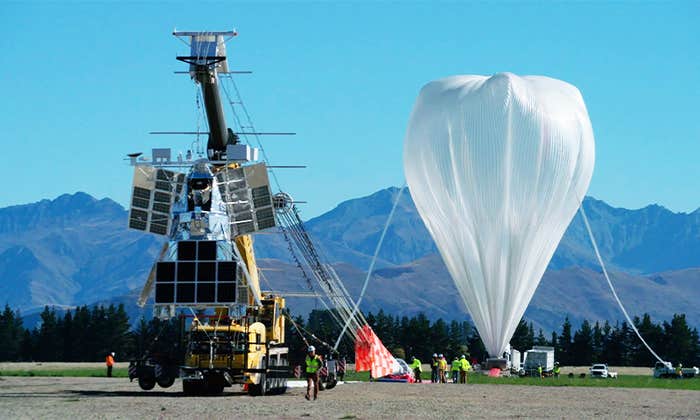You might think that after centuries of studying light, we know pretty much everything about it. It’s true we’ve had breakthrough after breakthrough in using it, from illumination to communication, from examining the micro- and macro-universes to scanning our own bodies. We understand that light is an electromagnetic wave, thanks to James Clerk Maxwell, whose equations established that in 1865; and that it also appears as quantum packets of electromagnetic energy called photons, as Albert Einstein recognized in 1905. But the more we look into light, the more we see and the more we learn. The classical view of light as a wave still produces new science as light waves interact with artificial “metamaterials”; and we are still exploring light as a quantum particle. Both approaches provide ways to manipulate light that were once only science fiction. Here are five recent marvels.
1. Bending Light for Invisibility
The magical invisibility rings and cloaks featured in fantasy stories reflect the ancient human dream of hiding things and people from sight. Invisibility shows up in science fiction too, like Star Trek, where hostile Romulan spacecraft conceal themselves with a cloaking device. This uses an idea from relativity, that strongly distorted spacetime makes light curve around the spacecraft as if it didn’t exist.
Physicists don’t yet know how to do that, but the classical optics of light waves and light rays points to another solution. We see an object as it interacts with incoming light. In principle, an invisibility cloak could intercept those incoming rays and bend or refract them into itself so they travel inside the cloak and emerge along their original paths. An observer, seeing what looks like undisturbed light, would think nothing is there, just as flowing water smoothly splitting around a rock and then recombining gives no downstream indication of the rock. But to make light follow this complex path, the cloak needs to be made from a metamaterial.

Researchers first tested this idea in 2006 with a rigid metamaterial cloak, a hollow cylinder whose wall held thousands of small structures that made microwaves traverse suitable paths within the wall. Placed around an opaque metal object, the cloak made the object nearly completely vanish under microwave radiation. Since then, researchers have made small inanimate objects and a fish, a cat, and a hand vanish under ordinary visible light, but only as seen over a narrow angle of view. Others have developed a flexible cloak that wraps around a small object to make it vanish, but only at one wavelength. Science can’t yet make a cloak that completely hides a person in ordinary light; but invisibility research is thriving and we’re approaching Harry Potter’s wondrous cloak.
2. Light Pushes and Pulls Things
Like thrown rocks, photons carry momentum that they transfer to an object on impact. This radiation pressure is why sunlight pushes comet tails away from the sun, and why it can propel a spacecraft. In 2010, the Japan Aerospace Exploration Agency (JAXA) launched IKAROS (Interplanetary Kite-craft Accelerated by Radiation of the Sun, honoring Icarus who flew near the sun in myth). Its thin, tennis court-sized polymer sail gathered solar photons, which collectively exerted a small force that steadily accelerated IKAROS. Six months and 300 million miles later, it arrived on target near Venus without using any fuel for propulsion. Now JAXA and other space agencies are considering longer missions using bigger, more effective solar sails.
We’re approaching Harry Potter’s wondrous cloak.
Remarkably, a light source can also pull an object toward itself, against the direction that the light propagates. Physicists have shown that within a specially shaped laser beam, the forward push of photons on a particle is dominated by a backward force due to the particle’s own electromagnetic response. The effect is strong enough to pull a microscopic object like a biological cell backward toward the laser. In 2023, however, a related experiment showed that a low-power laser could pull a comparatively big macroscopic object, 0.2 inch x 0.1 inch. This is hardly a powerful sci-fi “tractor beam” that can reel in an entire spacecraft, but it could provide a new way to remotely sample the atmosphere on Earth and other planets, and phenomena like comet’s tails.
3. Ghost Imaging: Pictures in the Dark
Suppose you want to form an image of something like a living cell that could be changed or harmed by the light energy that illuminates it. Ghost imaging uses the phenomenon of photon entanglement to produce an excellent image of a barely illuminated object. Entangled photon pairs, which are formed by certain optical processes, are quantum-correlated, such that measuring the properties of one immediately reveals the properties of the other, no matter how distant.
In ghost imaging, one of each of a swarm of entangled photon pairs interacts with the object and encounters a detector that simply registers its arrival. A second beam of the corresponding entangled partners never touches the object but goes straight to a sensitive multi-pixel detector. Computer analysis of the correlations between the two detector results creates a high-quality image of the object, even with weak illumination. This approach has uses such as converting images covertly taken by invisible infrared light to visible images detected by a high-resolution camera; or obtaining good quality X-ray images from a patient exposed to a low, relatively safe X-ray dose.
4. Quantum Slits in Time
In the famous double-slit experiment, first done in 1801, a light beam splits as it passes through two narrow slits in an opaque barrier. On the far side, the beams spread and overlap to form a pattern of bright and dark areas on a screen, showing that light consists of waves that can interfere with each other. But a modern version of the experiment where just one photon at a time is aimed at the slits still produces a wave-like interference pattern. According to Richard Feynman, this striking, still unexplained example of wave-particle duality “has in it the heart of quantum mechanics … it contains the only mystery.”
Light was slowed to 38 mph, which a fit cyclist could match.
Now physicists have reproduced this experiment with slits in time rather than space. They used a thin film of indium tin oxide (ITO), which is transparent to infrared light but quickly becomes reflective within 10-15 sec when excited by a laser. In the experiment, the researchers shot infrared light at the ITO. When the ITO became a mirror for a short time, the reflected infrared light remained in its original form. But when the ITO mirror was very briefly turned on and off twice in rapid succession, the reflected infrared light showed definitively that it had interfered with itself as a result of passing through not one but two time portals or slits.
One observer has commented that this work could become a classic like the original double-slit experiment. By extending that into time rather than space, the research offers a new way to explore “the only mystery.” The work also shows the feasibility of using metamaterials like ITO to control light in optical systems and quantum computers at ultrafast speeds.
5. Overtaking Light on a Bicycle
If there is one physics fact that people know, it’s that light is the fastest thing in the universe, traveling at 186,000 miles/sec in vacuum. The speed is reduced somewhat when light interacts with ordinary matter, dropping, for instance, to 124,000 miles/sec in optical fiber and plain glass. This is still fast enough to circle the Earth in a fraction of a second; and so it was big news in 1999 when Harvard researcher Lene Hau enormously slowed light to the human-scale speed of 38 mph, which a fit cyclist could match. This was accomplished in an exotic medium, a dense gas of sodium atoms cooled to nearly absolute zero. The result was a quantum medium called a Bose-Einstein condensate. Light interacts with this more strongly than with any ordinary medium and so it was hugely slowed. Later, Hau topped this achievement by bringing light to a screeching halt, then later recovering it and sending it on its way.
These results are breakthroughs in fundamental physics and could be useful as well, except for the need to work at temperatures near absolute zero. But since the original work, other researchers have slowed light in gases and solids at room temperature, making it possible to use slowed and stopped light in practical devices. These are currently being developed, for example, to synchronize signals in fiber optic networks and to store digital data in computers. Both applications are important steps toward developing advanced telecommunications networks and quantum computers based entirely on light rather than conventional electronic chips. ![]()
Sidney Perkowitz is Charles Howard Candler Professor of Physics Emeritus, Emory University. His latest books are A Short Introduction to Physics and Science Sketches: the Universe from Different Angles.
Lead image: Vlue / Shutterstock




























